Making a report on understanding oneself is compulsory for a trainee who is pursuing a B.Ed. course. This has to be submitted by every student-teacher during his/her B.ed. course. To help you in making this report, I am giving a sample report on understanding self. You will learn each and every step of writing a report on the Understanding Self with the help of this example.
How to Write A Report on Understanding Self?
As I already mentioned, in this post you will learn how to make a report on understanding yourself with an example. By following each step given below, you will learn to make a proper report on understanding self for yourself. You will be able to submit this report to your institution if you are pursuing B.Ed. and you are given to make a report on this topic with minor changes.
Here I am following five steps to prepare a report on understanding self. The steps are given below to provide an overview of this report.
- Introduction
- Significance of Understanding Self
- Development of Understanding Self
- Activities (three activities included)
- Conclusion
1. INTRODUCTION
Meaning: The process of developing an identity begins with the infant’s discovery of self and continues throughout life. This can include the physical self, the social self, the competent self, and the inner or psychological self. Meanwhile, a person’s self-understanding is about knowing what motivates his or her actions.
Concept of Understanding Self:
The concept of understanding self is the awareness of and ability to understand one’s own thoughts and actions. In order to accomplish such, one has to explore one’s own tendencies, core beliefs, personality traits, hopes and dreams, emotional reactions, judgments, and attachments. Self-understanding is concerned with understanding the information and providing the content.
The understanding self is thinking about what is involved in being? What distinguish you from being an object, an animal, or a different person? Richard StevensRichard Stevens
2. SIGNIFICANCE OF UNDERSTANDING SELF
(a) Understanding self is key to self-awareness, it allows us to look at our thoughts, feelings emotions, and actions. Through this practice, we are able to look at ourselves with interest and curiosity.
(b) Self-awareness is important because when we have a better understanding of ourselves, we are able to experience ourselves as unique and separate individuals.
(c) Understanding self is important to gain a good understanding of ourselves to identify our values and strengths.
(d) Knowing who we are and what we stand for in life can help to give us a strong sense of self-confidence.
(e) Understanding self is the awareness and ability to understand. One’s thoughts and actions.
3. DEVELOPMENT OF UNDERSTANDING OF SELF
The understanding self is not something that you are born with, but which anyone creates and develops as they grow. The development of self can be discussed in infancy, early childhood, middle childhood, and adolescence.
(i) Understanding self during Infancy:
At birth, a newborn baby is not aware of his/her unique existence. This means that the infant has no self-recognition. The infant brings him/he sand in front of him/her hand in front of his/her face and looks at it but does not realize the hand belongs to him/her. The sense of self emerges gradually during infancy and self-image recognition happens around 18 months of age.
(ii) Understanding Self During Early Childhood:
They use physical understanding of themselves and use the physical description of themself to differentiate themselves from others. They may descriptively work like tall, big, etc. Their self-description is in absolute terms. Instead of saying “I am tall” this means they do not see themselves in comparison with others. They often overestimate themselves.
(iii) Understanding self during middle childhood:
During this period, children’s self-evaluation becomes more complex. They begin to distinguish between the real self and the ideal self and differentiate themselves from others in comparative rather than absolute terms. The child shifts towards describing herself in terms of her internal characteristics.
(vi) Understanding self during Adolescence:
Understanding becomes increasingly complex during adolescence. The adolescence stage is a period of storm and development. This is a crucial stage for discovering the self. Adolescents faced crises of conflict while understanding themselves in hard times sometimes they felt stressed.
4. ACTIVITIES:
(a) Activity – 1
Self-Concept
(i) Meaning of Self-concept:
Self-concept is a cognitive or descriptive component of oneself. For Example, I am a first runner and also is an individual belief about himself or herself, including the person’s attributes and who and what the self is. It is an image an individual has of themselves. The self-concept can be physical, social, temperamental, academic, moral, and intellectual.
(ii) Formation of self-concept:
There are many factors that contribute to the formation of self-concepts such as –
(a) Relationship: An individual relationship with himself/herself as fathers influence the formation of self-concept.
(b) Interests: An individual interest is his/her daily life, his choice of living contributes to the formation of self-concept.
(c) Aptitudes: An individual’s skills, ability, and talent are certain things that influence the formation of self-concept.
(d) Personality: An individual’s personality greatly influences the formation of self-concept.
(e) Attitudes: Individual attitudes towards self, others, and life can be influenced by the formation of self-concept.
(f) Values: Individual values in different aspects influence the formation of self-concept.
(iii) Description of the activities done in the classroom:
This activity was done virtually. The teacher has done this activity through an online class on Google Meet. In the class, the teacher asks us about the meaning of self-concept, and why self-concept is necessary for everyone. The teacher asked the students one by one to talk about their weaknesses, strengths, fears, personalities, characteristics, behaviors, emotions, pain, etc. openly and without hesitation. Lastly, the teacher gave us an activity to write about ourselves and she gave us a question “Who am I” to submit through Google Classroom.
(iv) Feelings:
This activity really helped me a lot to identify myself and my characteristics. It helped me to know about myself and my strengths, weaknesses, fears, behaviors, characteristics, etc., and accept myself as the way I am. This activity helped me to become confident in talking about who I am. I realized my behavior and what I am and gave me satisfaction.
This activity also helped me to know about my friends and their strengths, behavior, and character. It surely helped the relationship of all the students to grow well.
(b) Activity – 2
Gratitude
(i) Meaning of Gratitude:
The common meaning of gratitude is to be thankful for the benefits received. Gratitude is greatness. When someone does good something for anyone then feels grateful. Gratitude is defined as a sense of thankfulness and joy in response to receiving a gift, whether the gift is a perceptible benefit from a specific other or a moment of peaceful ecstasy suggested by nature. Simply gratitude is the thankful, s person feels for everything good that happens in his/her life.
(ii) Formation of gratitude:
There are some ways to form or develop gratitude in a person’s life. They are as follows –
- By finding gratitude in challenges in life.
- By improving our happiness in others. Being happy can always make someone grateful.
- Spend time with loved ones.
- By expressing ourselves openly.
- People can form gratitude by appreciating each and everything in life which is good whether it is small or big.
(iii) Description of the activities done in the classroom:
In this activity, the teacher told us to write a letter to our mothers. In the letter, we expressed the mistakes we have made some time with our mother. This activity is done through an online class where the teacher asks about gratitude and to whom we give gratitude lastly she told us to write a gratitude letter for our mother and submit it through Google Classroom.
(iv) Feeling:
After completing the activity I felt a strong emotional bond with my mother and realized how much she is doing for us. I feel thankful and proud to be a daughter of her. When I saw the letter to my mother by that my mother got emotional. All students feel so much gratitude toward their mother.
(C) Activity – 3
Positive Relationship
Meaning of Positive Relationship:
A positive relationship is a relationship that brings more happiness than happiness without feeling angry, depressed, or upset. Healthy and positive relationships are vital for our emotional and physical well-being. From the moment we are born, human beings form relationships with others, the baby bonds with parents, young people bond with friends, etc. All relationships should have the following qualities –
- Kindness
- Trust
- Mutual respect
- Honesty
- Feelings safe from harm
- Feeling valued
- Support
- Empathy
(ii) Formation of Positive Relationship:
For the formation of a positive relationship, some aspects are important in life. These are as follows –
(a) Accept and celebrate differences: All the people on earth are different from each other. They should accept others the way they are.
(b) Listen effectively: Listening and understanding what others communicate to us, is the most important part of a successful interaction.
(c) Give people time: Giving time to others is also a huge gift in this world, where time is the most important thing.
(d) Develop our communication skills: Whether the feedback is good or bad, we should learn to accept that and give feedback to others.
(e) Develop empathy: Empathy builds connections between people and helps in building positive relationships.
(f) Learn to trust more: Trust is the most important thing in a relationship.
(iii) Description of activities done in the classroom:
This activity is done through virtual mode, and she told us to write about our strengths, weaknesses, and good qualities ourselves she also gave an activity to write about the positive and negative qualities of (a) Your Friend (b) Jintu Sonowal (c). In the class, all students try to talk about the characteristics of themselves and their friends without hesitation. It helps us to know about each other.
(iv) Feelings:
After the activity, I felt a strong connection with my friends to know each other and by sharing our feelings about Madam which was real and raw. It also helps us to get to know each other. The trust, love, and acceptance of our friends and teachers surely helped to form a healthy and positive relationship.
5. CONCLUSION
By participating in understanding self, students are encouraged to further explore topics they are interested in, developing strengths, and study skills. Understanding the self also brings happiness, fewer inner conflicts, self-control, tolerance, vitality, and pleasure to a person and makes the person become the best version of himself/herself.
Without awareness and understanding of ourselves, and a sense of self rooted in our values, it is hard, if not impossible to be aware of and respond to the emotions of others.
PDF of an Example/Model Report on Understanding Self
For a better understanding and for your convenience I have also attached the PDF of the sample report on understanding self. This PDF includes 5 pages in it. Click the up and down arrow for the next or previous pages.
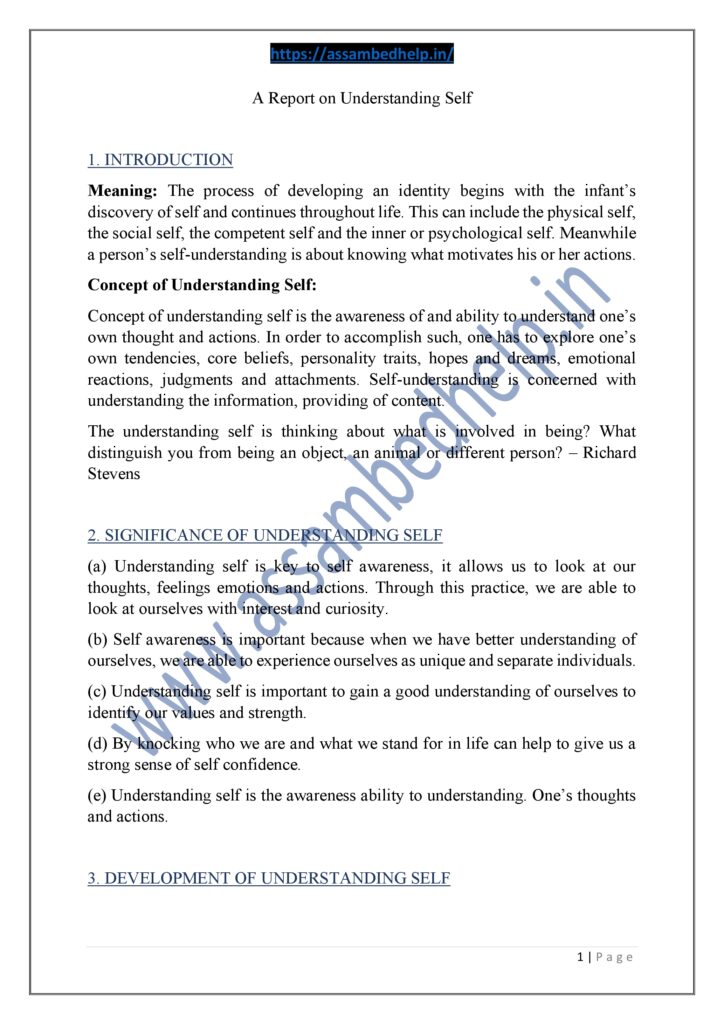
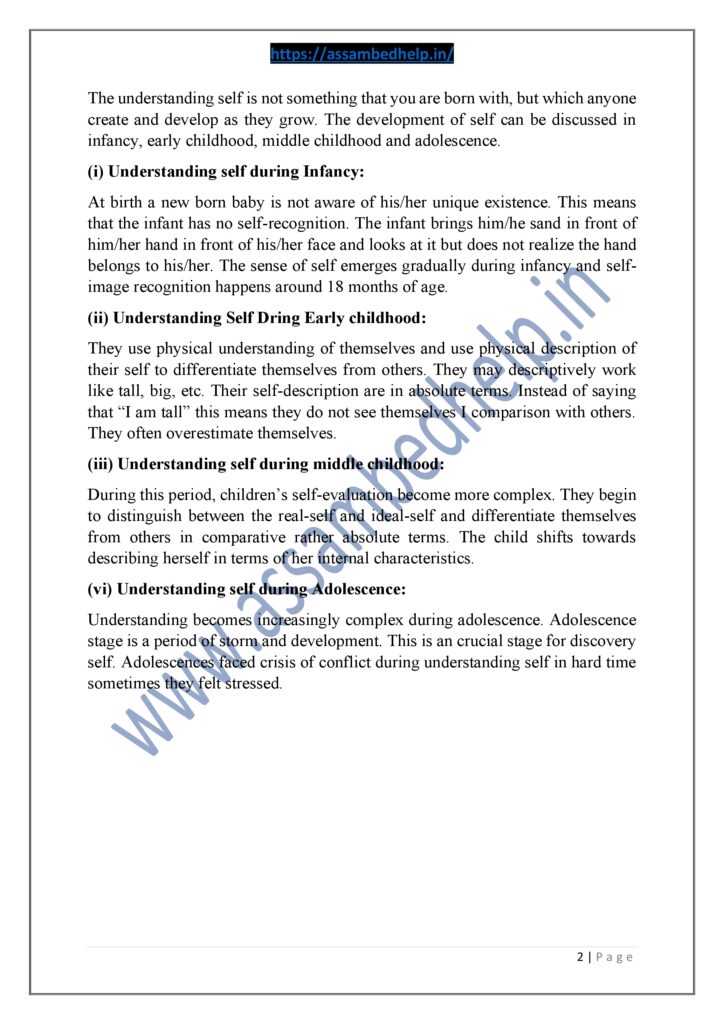
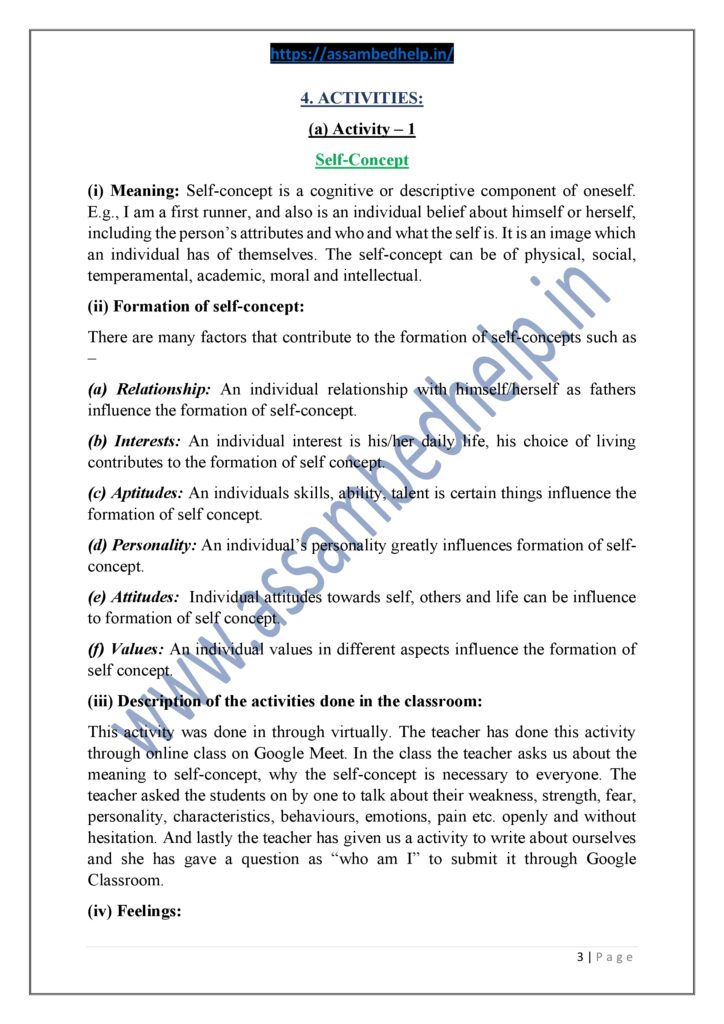
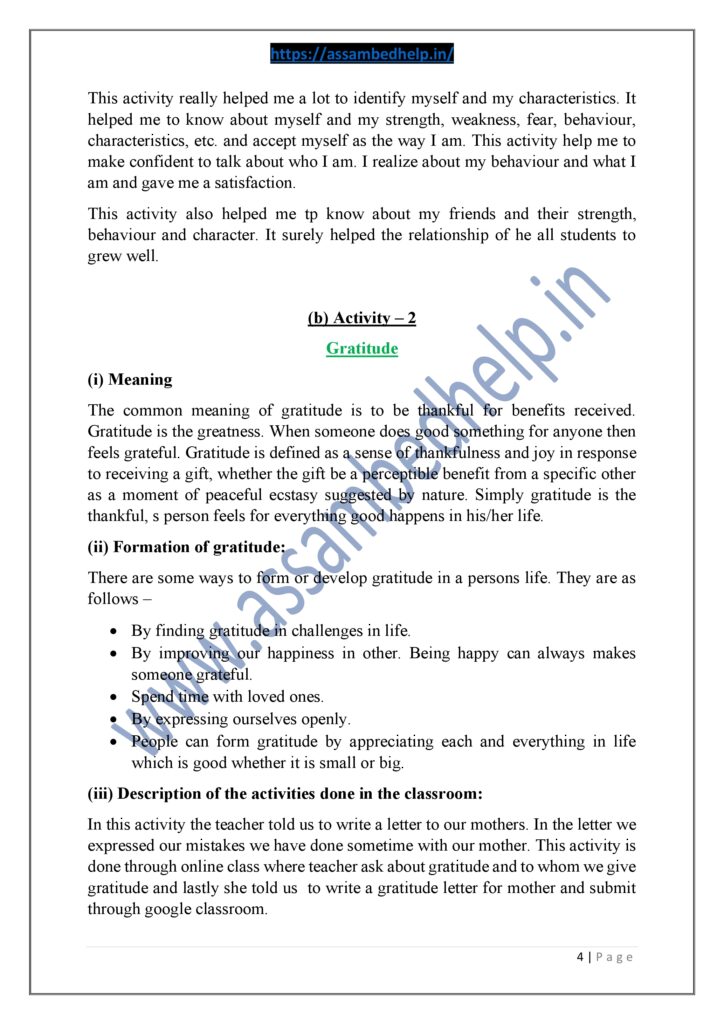
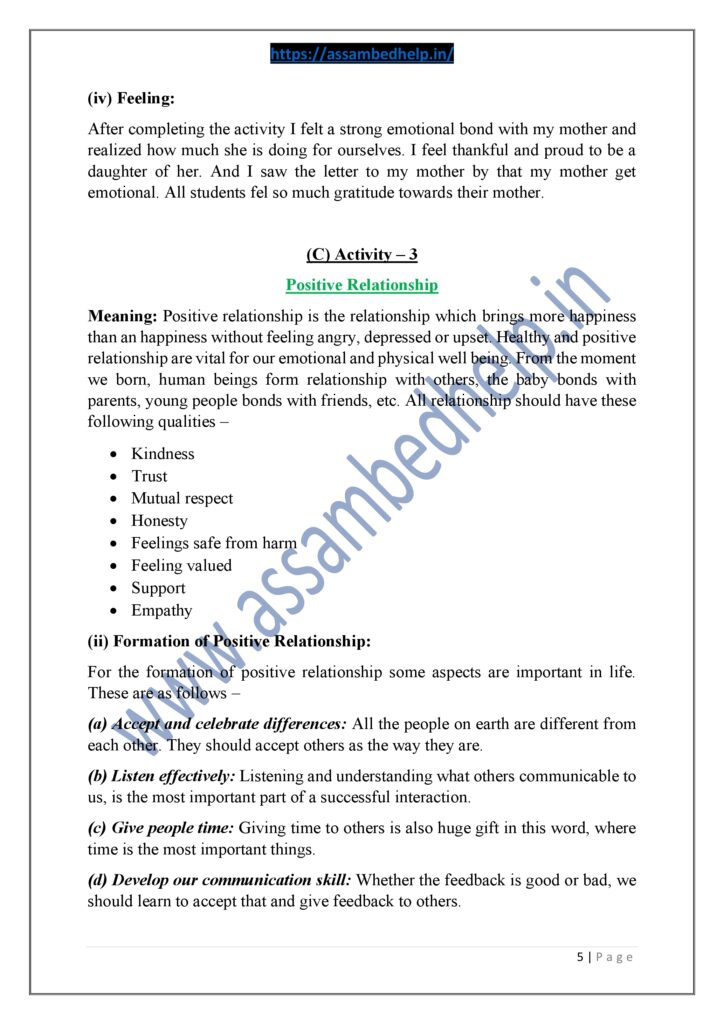
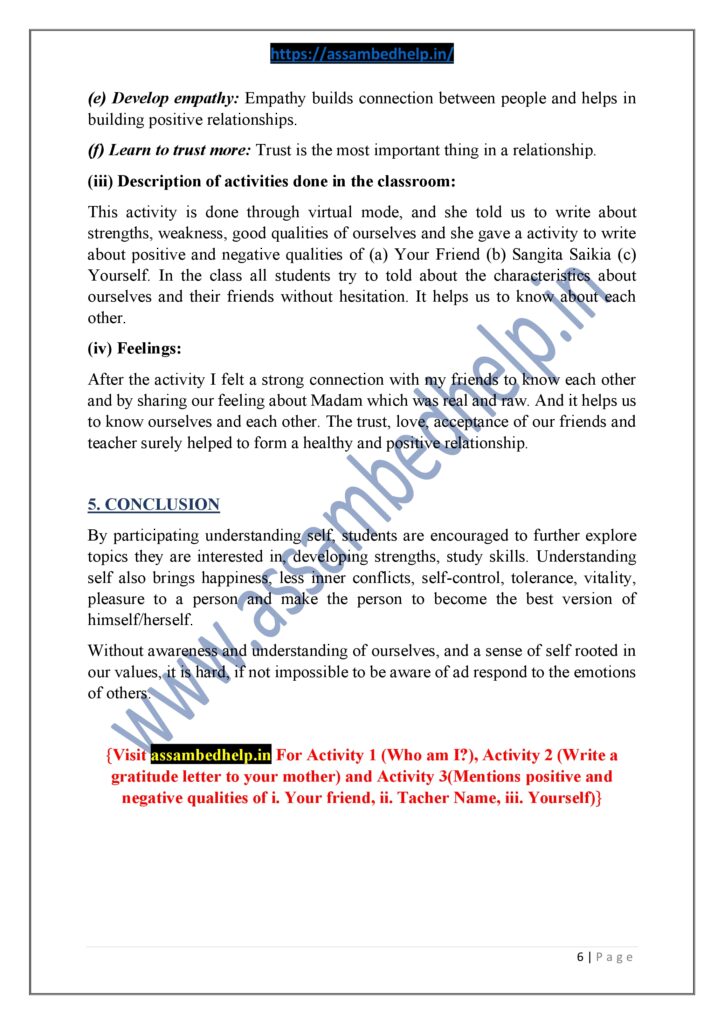
This sample report on understanding self is incomplete. It does not have activities that are mentioned. For the activities, please visit the link given in each activity section. Also, it is to be noted that, the format may or may not be exactly similar to the format given by your B.Ed. institution. So please confirm and make changes wherever necessary.